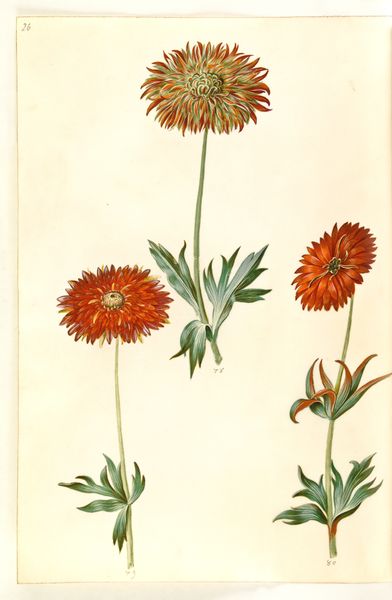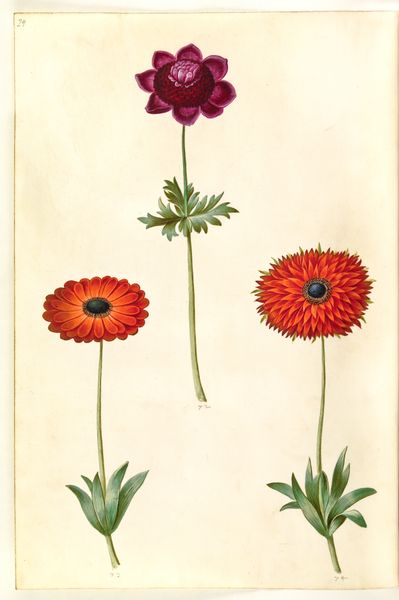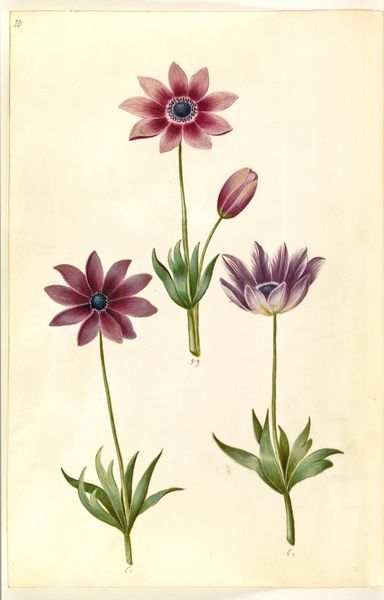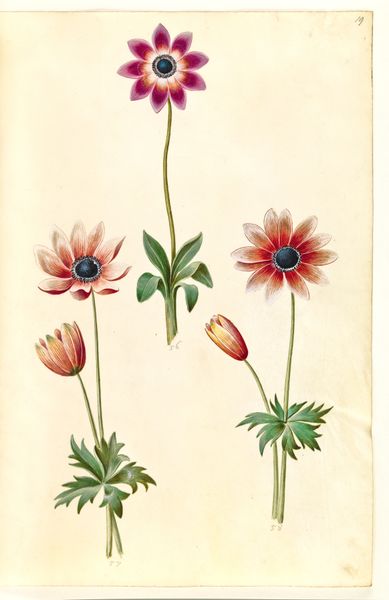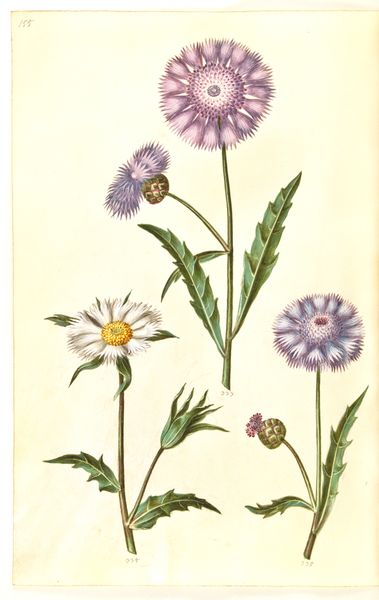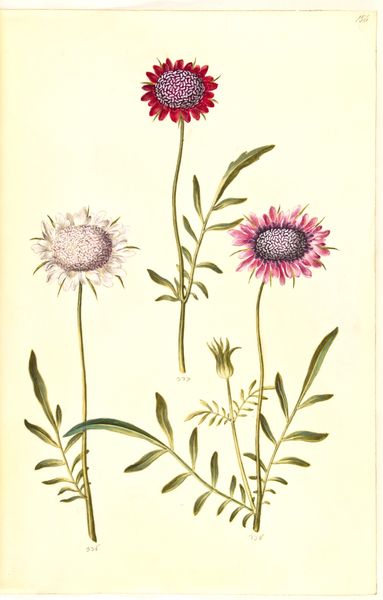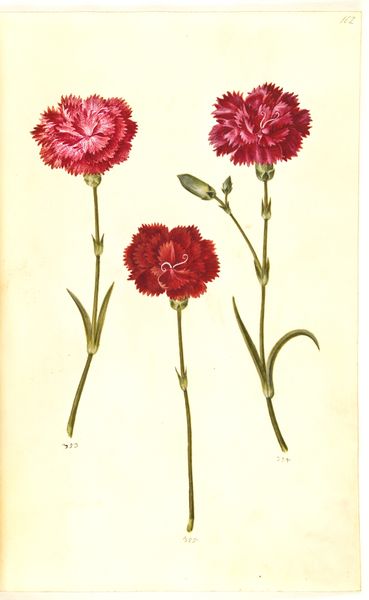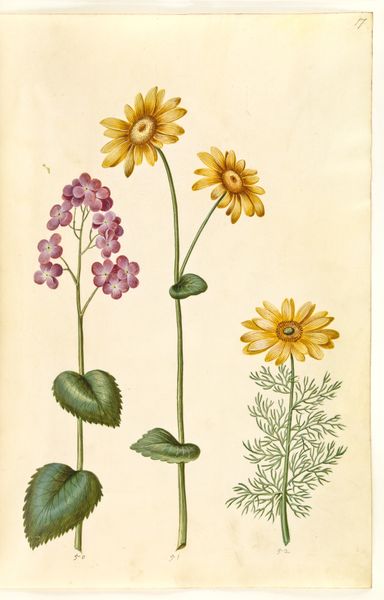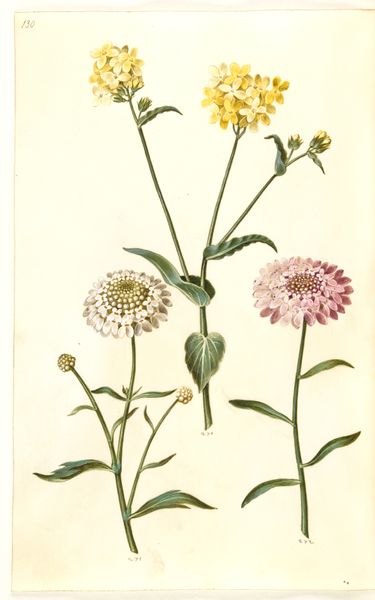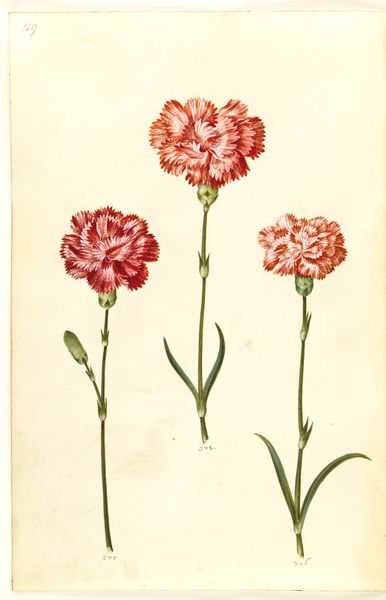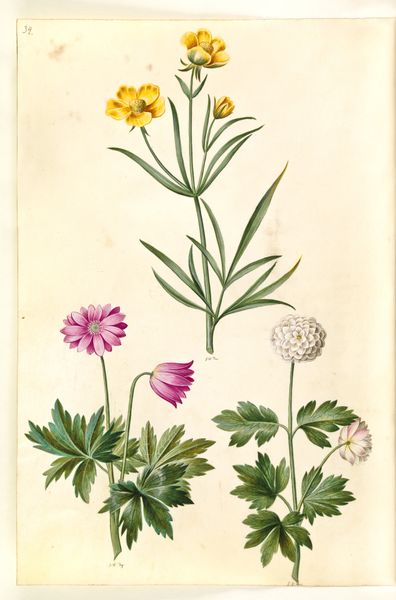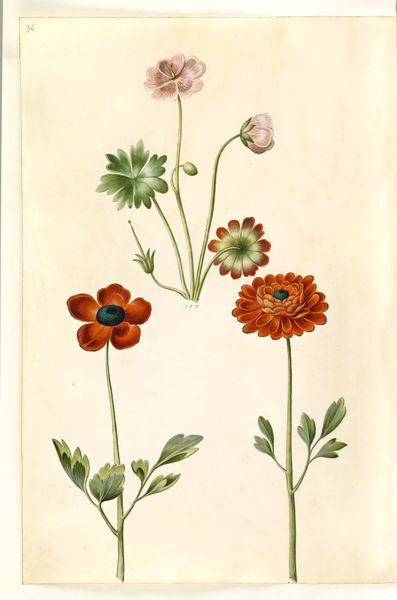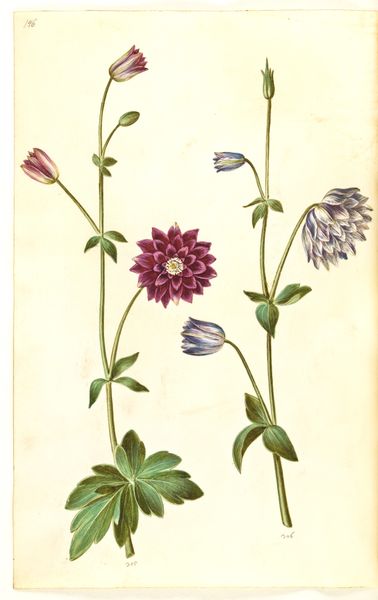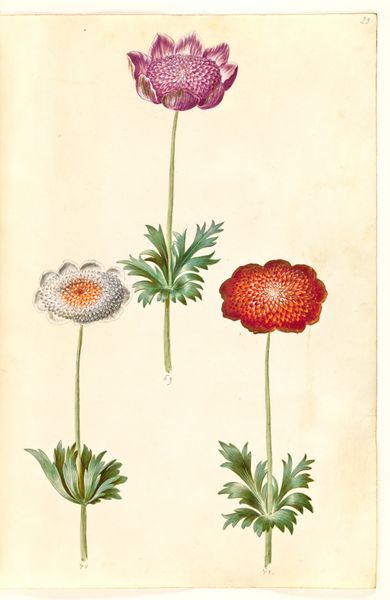
drawing, gouache
#
drawing
#
dutch-golden-age
#
gouache
#
botanical art
Dimensions: 375 mm (height) x 265 mm (width) x 85 mm (depth) (monteringsmaal), 358 mm (height) x 250 mm (width) (bladmaal)
Hans Simon Holtzbecker created this delicate botanical study of Anemone ×fulgens around the mid-17th century. The anemone, derived from the Greek word for "windflower," carries with it whispers of fragility and transience. The vibrant colors and detailed rendering remind us of the flower's symbolic weight. From ancient mythologies to Renaissance paintings, flowers have been used to signify everything from love and beauty to death and mourning. Consider Botticelli's "Primavera," where Flora scatters blossoms, embodying the renewal of spring and the cycle of life. The anemone itself, with its brief bloom, echoes the fleeting nature of human existence. Its presence here invites us to contemplate the enduring power of nature's cycles, a visual memento mori that encourages us to reflect on our own place within the grand tapestry of time.
Comments
No comments
Be the first to comment and join the conversation on the ultimate creative platform.
